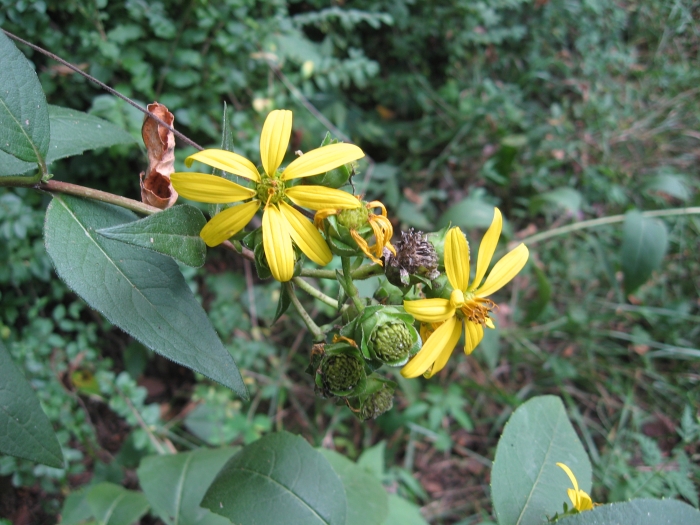Starry Rosinweed
(Silphium asteriscus)
Starry Rosinweed (Silphium asteriscus)
/
/

Masebrock Wikipedia
Public domain
Image By:
Masebrock Wikipedia
Recorded By:
Copyright:
Public domain
Copyright Notice:
Photo by: Masebrock Wikipedia | License Type: Public domain | License URL: https://creativecommons.org/public-domain/ | Uploader: Rrburke | Publisher: Wikimedia Commons | Title: Silphium_asteriscus.jpg | Notes: {{Information |Description={{fr|1=Port de Sinojackia xylocarpa - Jardin botanique de Strasbourg - FRANCE}} |Source={{own}} |Author=[[User:Denis.prévôt|Denis.prévôt]] |Date=2010-05-22 |Permission= |other_versions= }} [[Category:Styracaceae]] [[Categor |




















































Estimated Native Range
Summary
Silphium asteriscus, commonly known as Starry Rosinweed, is a deciduous perennial herb native to prairies, glades, and open woodlands in the Southeastern USA. It typically grows to a height of 2-5 feet (0.6-1.5 meters) and a width of 1 foot (0.3 meters). The plant features tall, sturdy stems topped with bright yellow, daisy-like flowers that bloom from late spring through fall, providing a long season of visual interest. The flowers are highly attractive to pollinators, adding ecological value to the garden.
Starry Rosinweed is valued for its drought tolerance and its ability to thrive in poor soils, making it an excellent choice for naturalistic plantings and wildflower gardens. It is often used in prairie restorations, as well as in borders and as a specimen plant. While it prefers full sun, it can also tolerate part shade, and it adapts well to a range of soil types, provided they have good drainage. This species is not known for significant disease or pest problems, but it can spread somewhat aggressively by seed in optimal conditions. Gardeners may wish to deadhead spent flowers to prevent self-sowing if spread is a concern.CC BY-SA 4.0
Starry Rosinweed is valued for its drought tolerance and its ability to thrive in poor soils, making it an excellent choice for naturalistic plantings and wildflower gardens. It is often used in prairie restorations, as well as in borders and as a specimen plant. While it prefers full sun, it can also tolerate part shade, and it adapts well to a range of soil types, provided they have good drainage. This species is not known for significant disease or pest problems, but it can spread somewhat aggressively by seed in optimal conditions. Gardeners may wish to deadhead spent flowers to prevent self-sowing if spread is a concern.CC BY-SA 4.0
Plant Description
- Plant Type: Herb
- Height: 2-5 feet
- Width: 0.4-1 feet
- Growth Rate: Moderate
- Flower Color: Yellow
- Flowering Season: Spring, Summer, Fall
- Leaf Retention: Deciduous
Growth Requirements
- Sun: Full Sun, Part Shade
- Water: Low, Medium
- Drainage: Medium, Fast
Common Uses
Bee Garden, Bird Garden, Butterfly Garden, Deer Resistant, Drought Tolerant, Low Maintenance, Showy Flowers
Natural Habitat
Native to prairies, glades, and open woodlands in the Southeastern USA
Other Names
Common Names:
Scientific Names: , Silphium asteriscus, Silphion asteriscum,
GBIF Accepted Name: Silphium asteriscus L.